Nestled in the picturesque Gloucester countryside, St Mary’s Church in Kempley stands as a testament to Norman architectural ingenuity and artistic heritage. Built around 1130, this quaint church boasts the oldest timber roof of any building in England and some of the most complete Romanesque paintings in Northern Europe. Likely constructed by Baron Hugh de Lacy, the church’s exterior is modest, but its interior reveals a treasure trove of medieval wall paintings that vividly depict the rich history and spirituality of the era. The best time to visit St Mary’s Church is from late spring to early autumn when the weather is favorable for exploring the surrounding scenic landscapes.

Why Visit St Mary’s Church in Kempley?
St Mary’s Church is a hidden gem that offers a unique glimpse into medieval England. Here are five must-see highlights:
- Romanesque Wall Paintings:
The church houses the most complete set of Romanesque paintings in Northern Europe, dating back to the early 12th century. These vivid frescoes cover the chancel and nave, depicting biblical scenes and heavenly visions, providing a fascinating insight into medieval religious art. - Oldest Timber Roof:
The church features the oldest timber roof of any building in England, with timber felled between 1114 and 1141. This architectural marvel has stood the test of time and remains a highlight of the church’s structure. - Ancient West Door:
The remarkable west door, still in use today, is one of the earliest surviving doors in England. Protected by the addition of a 13th-century tower, the door is an impressive piece of Norman craftsmanship, made from planks of a single tree. - Medieval Architectural Elements:
From the 14th-century timber-framed porch to the simple ‘Saxon’ layout with a rectangular chancel and aisleless nave, the church’s architectural elements showcase the transition from Saxon to Norman design. - Serene Atmosphere:
Located amid green country lanes, St Mary’s offers a peaceful retreat. Its secluded location and the beauty of the surrounding Gloucestershire countryside make it a perfect spot for reflection and relaxation.
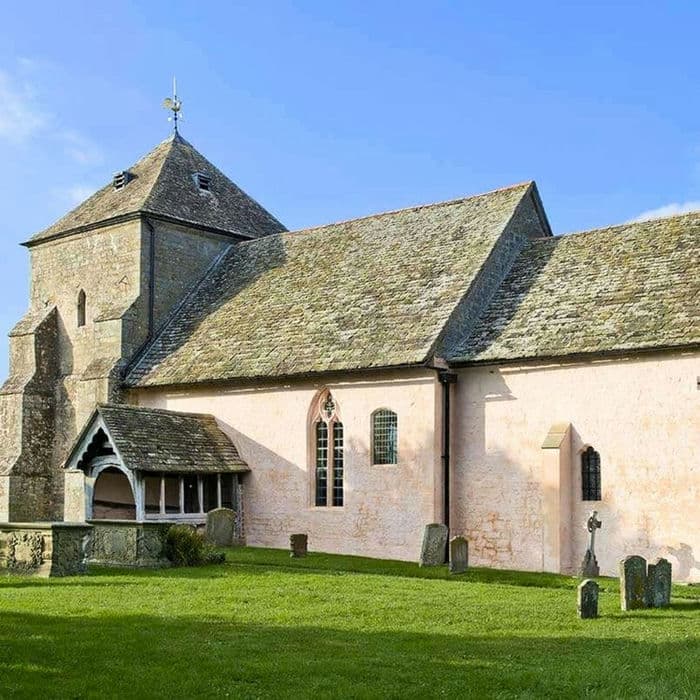
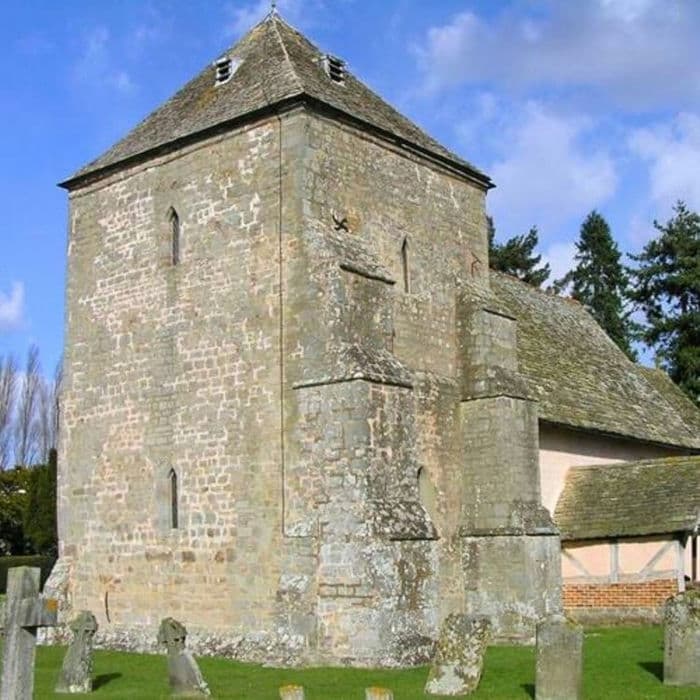
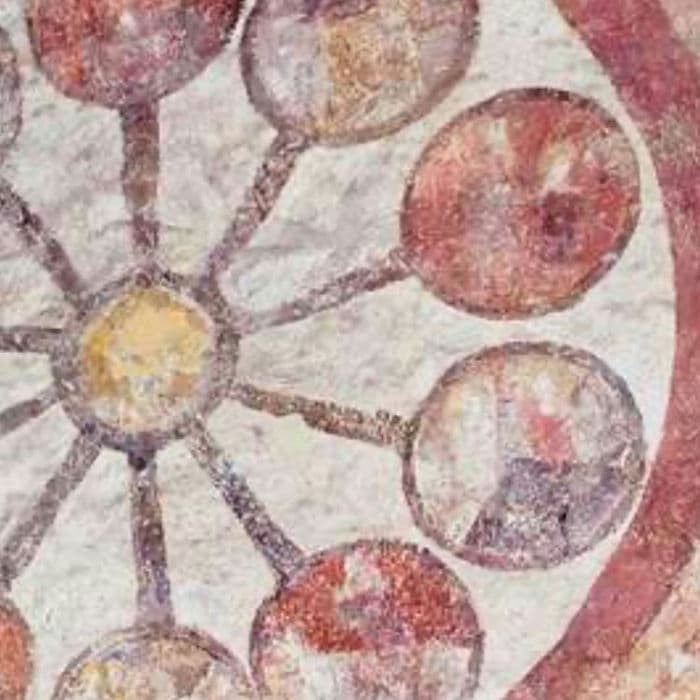
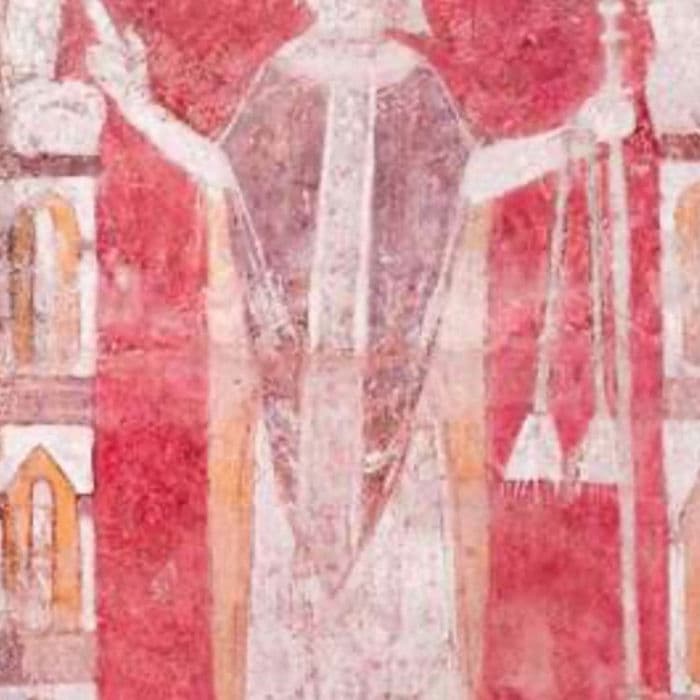
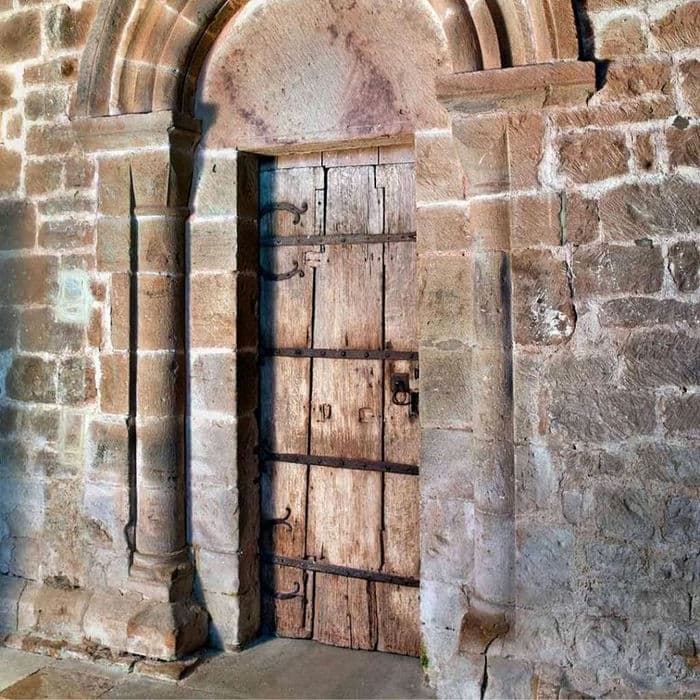
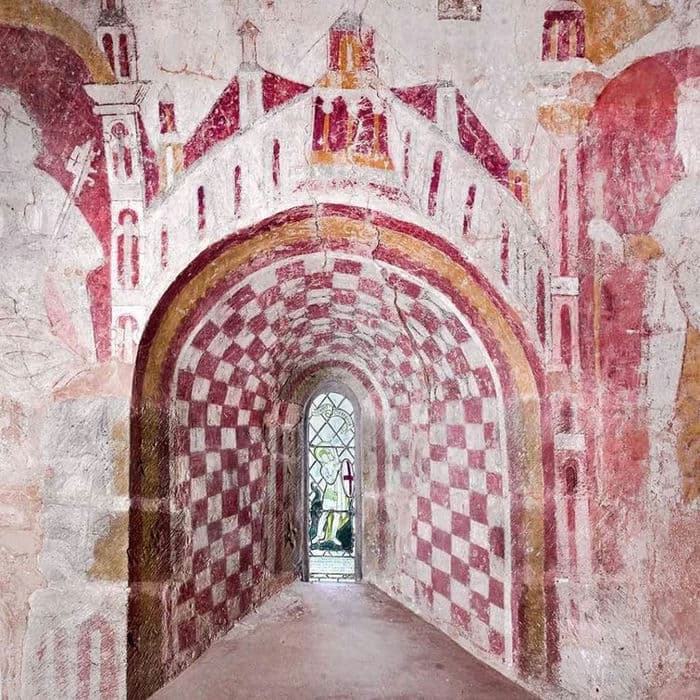
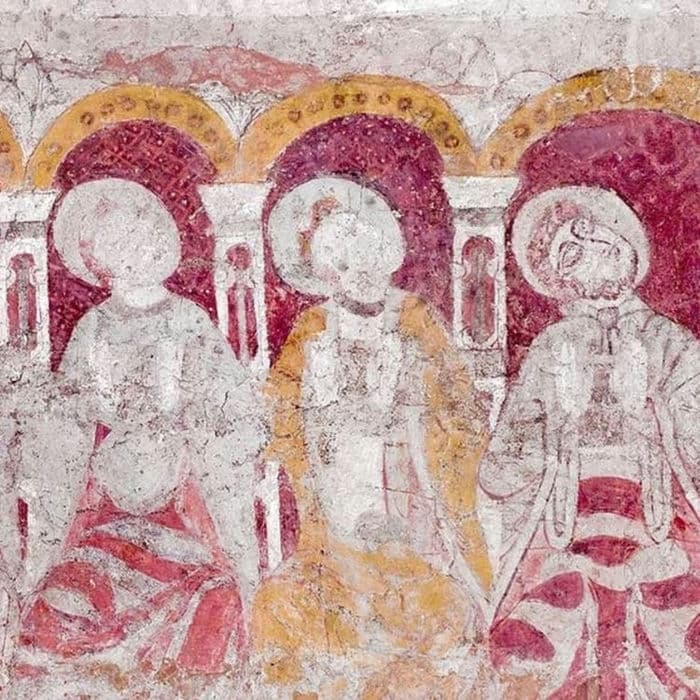
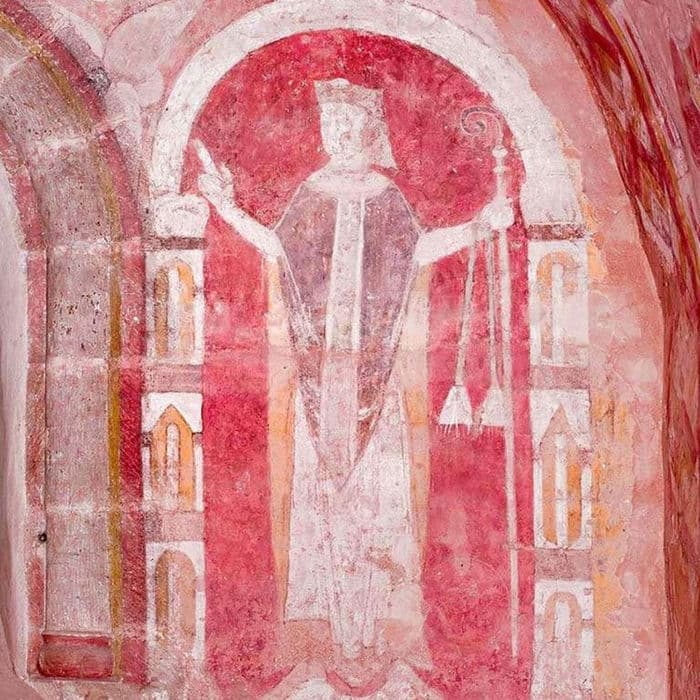
Frequently Asked Questions:
- What makes St Mary’s Church in Kempley historically significant?
St Mary’s Church is historically significant for its exceptionally well-preserved Romanesque wall paintings, the oldest timber roof in England, and its early Norman architectural features. It provides invaluable insights into medieval religious life and art. - Who built St Mary’s Church?
The church was likely built by Baron Hugh de Lacy, the owner of Kempley manor, around 1130. It replaced an earlier Saxon church on the same site. - What are the main features of the wall paintings in St Mary’s Church?
The wall paintings in St Mary’s Church depict a range of biblical scenes and apocalyptic visions. The nave features more earthly subjects, while the chancel, considered Heaven, shows a vision of Christ at the Apocalypse. These paintings were created using both fresco and secco techniques. - Is St Mary’s Church open to the public?
Yes, St Mary’s Church is open daily. From March to October, it is open from 10 am to 6 pm, and from November to February, it is open from 10 am to 4 pm. Visitors can explore the church and its remarkable paintings for free. - What other notable buildings are in Kempley?
Kempley also features St Edward’s Church, a Grade II* listed building dedicated to Edward the Confessor. Built in 1903-1904, it served as a chapel of ease due to St Mary’s Church’s distance from the main population centers of the parish.
St Mary’s Church in Kempley is a historical and artistic treasure that offers a captivating journey back to Norman England. Whether you are a history enthusiast, an art lover, or simply seeking a peaceful retreat, this remarkable church is well worth a visit.
